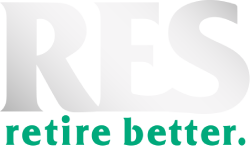When your paycheck income stops, it can be a daunting time period. While you’re working, you have an accumulation mindset, but when you retire, you look at money differently. It’s a de-accumulation mind set.
To bolster retirement cash flow, many retirees may feel compelled to downsize or move to a neighborhood with a lower cost of living, despite not wanting to leave their homes.
But there is a solution that allows you to retain ownership of your home. If you’re over 62 years old and you own your property outright – or have enough equity in your home –Â you may be able to convert your home equity into a monthly income stream, a lump sum, or a line of credit. This can be achieved through a reverse mortgage loan, which can be used to pay for renovations, healthcare costs, college fees and day-to-day living expenses. You can even use the funds to eliminate your monthly mortgage payments, although you will need to continue paying your property taxes, homeowners insurance, and maintain your home.
Unlike a traditional mortgage, where you pay monthly installments to a lending institution, with a reverse mortgage, the lender can pay you. While interest rates are comparable to traditional mortgages, there are other costs and considerations to take into account when choosing this form of home equity over other options. Here, we’ll take a closer look at the benefits and trade-offs of incorporating a reverse mortgage into your retirement toolkit.
How long do you plan to live in your home?
While many retirees intend on remaining in their homes, one-third of U.S. baby boomers plan to move at some point during retirement. Others may consider renting rather than owning. Because reverse mortgages have a primary residence requirement for the lifetime of the loan, how long you intend to remain in your home is a fundamental consideration.Â
If you may need to move to assisted living due to health reasons, retirement funding needs could be more effectively met with traditional financing, such as Home Equity Lines of Credit (HELOCs). Like credit cards, HELOCs allow you to draw on your line of credit when you need it and only pay interest on what you use – but they do not require you to live in the home as your primary residence.Â
You or your heirs will never owe more than the value of your property
A reverse mortgage is a non-recourse loan. This means that when the loan is repaid, neither you nor your heirs will be personally liable for more than the value of your property. And you’ll never have to pay principal or interest payments while you remain living in your home as your primary residence.
Who is looking to inherit your home?
Whether your heirs wish to inherit your property or not is a key consideration when deciding to leverage your home equity to supplement your retirement income. With a reverse mortgage, the loan amount is only due to be repaid in the event of your death, if you decide to sell your property, or if the home is no longer your primary residence. If your home sells for more than your outstanding loan balance, the difference will go to your loved ones, but if it sells for less, your heirs will receive nothing. The FHA insurance will cover the any shortfall.Â
It’s important to note that if you want to leave your home to your children, the balance of the reverse mortgage would have to be paid. This could be paid off in cash or through a refinance.
New legislation reduces the risks
Historically, one of the problems associated with reverse mortgages loan was that retirees who were short of funds used reverse mortgages to maintain their lifestyles. Often, the income wasn’t sufficient to pay their property expenses and they would run the risk of foreclosure. Although there are no monthly mortgage payments on a reverse mortgage, you still need to pay your property taxes, homeowners insurance, homeowners association dues, as well as maintain the home.
But legislation has changed over the years. If you apply for a reverse mortgage today, lending institutions will analyze your personal financial situation and put a realistic limit on your loan amount. Your lender could also keep some funds aside to pay for property taxes and homeowners insurance, so there are fewer risks involved.
Help keep retirement income at a level where assets are not depleted
If you take out a reverse mortgage loan in the form of a line of credit at the age of 62, the remaining funds on the credit line increase each month by the amount of interest due on the loan, effectively providing a hedge against inflation. When the stock market is underperforming, you have the option to borrow from this line of credit line instead of having to sell stocks at the lower end of the market. And with the Case-Shiller U.S. National Home Price Index at an all-time high, a reverse mortgage could not only generate income but also protect your property against a potential downturn in the housing market.
Reversing reverse mortgage misconceptions
Historically, reverse mortgages were viewed as a last resort. But today, many financial advisers consider reverse mortgages as a cost-effective way to increase retirement cash flow.Â
Regardless, misconceptions about reverse mortgages are still commonplace such as the unfounded belief that the bank takes ownership of your house. Like any traditional mortgage, you’ll retain your property’s title as long as you continue living in your home as your primary residence and continue to honor your loan obligations, such as property taxes, household insurance, and home maintenance.Â
The future of home equity
According to a Global Equity Release Roundtable 2020 survey report, the global equity release market is expected to exceed $50bn by 2031, which means that it could more than treble its value over the next decade. This predicted exponential market growth combined with bullish property prices and longer life expectancies will see more and more retirees leveraging their homes to achieve their retirement goals in the future. As always, we recommend paying close attention to the benefits and risks when harnessing the cash-flow benefits of a reverse mortgage over other home-equity options.
Next steps?
You’ll need to choose a lender who can provide a reverse mortgage that will best fit your personal financial circumstances. Contact us to speak with an agent who will answer your questions and help you decide if a reverse mortgage is right for you.


